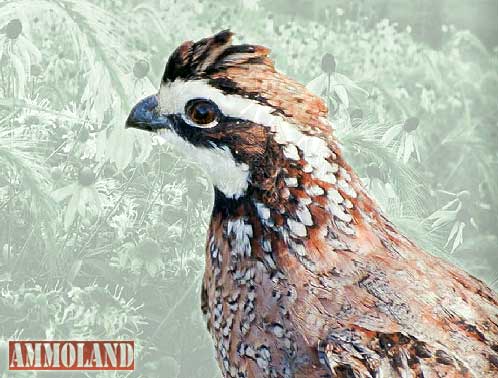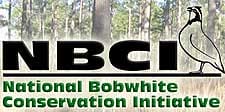By Don McKenzie, NBCI Director


Knoxville, TN -(Ammoland.com)- Quail biologists often paraphrase the movie Field of Dreams – “If you build it, they will come” – usually to emphasize the importance of suitable habitat as the foundation of quail populations.
From an NBCI point of view, it and they can have additional and equally important meanings:
- it can mean a vision, a strategy, an initiative, an organized alliance, or a planning tool;
- they can mean partners, manpower, political supporters, or funders.
It is the NBCI vision and unified 25- state strategic plan and its landscape-scale restoration feasibility assessment. It is the growing initiative that is providing unprecedented leadership and national-level capability for implementation. It is the increasingly organized and strengthening alliance of state wildlife agencies, non-government organizations, research institutes, universities, other conservation initiatives, and other state and federal agencies. It is the NBCI’s new Coordinated Implementation Program (CIP), designed to catalyze effective bobwhite focal areas across the states. The broad community of bobwhite conservationists has built all this.
They now are beginning to come, in varied forms, some unexpected. A chance observation of a 2014 federal public notice for a new vegetation management plan led to phone calls, which led to a meeting, which led to a unique and previously unforeseen formal partnership for bobwhite and grassland bird restoration. The first official NBCI focal area in Arkansas was established last month on Pea Ridge National Military Park (NMP), a 4,300-acre unit of the U.S. Department of Interior’s National Park Service (NPS).
I am confident that the NPS had been on the minds of very few NBCI states or quail partners. Likewise, I feel sure that bobwhite restoration has not been on the minds of many NPS employees or administrators. But because the states and the bobwhite community first built it, we have earned the NPS’s attention. They now are coming to be an active partner in a common cause.
Why the NPS?
Due to its overall preservation tradition on national parks, wildlife managers generally overlook the NPS as a potential wildlife conservation partner. But the agency’s national battlefields are different, with a primary cultural mission tied to a specific point in time. The NPS now recognizes that most national battlefields are not authentic representations of the landscapes on which the memorialized event occurred. Vast, mowed fields of fescue are inappropriate, because Civil War-era cattle grazed native forages (fescue hadn’t even been discovered); 19th century forests had been widely thinned out or cut over; fire was common on the landscape; and farm fields were small by today’s standards. In general, the 19th century eastern landscape was bobwhite habitat.
More importantly, the NPS now is beginning to act to restore more authentic historical landscapes; i.e., bobwhite habitat. The leadership and staff of Pea Ridge NMP plan to eventually restore more than 2,500 acres of the park into native grassland, savannah and open woodland, all of which will be burned frequently. As a result of the new partnership, the Arkansas Game and Fish Commission is prepared to assist on the park, as well as on adjacent acreages of willing private landowners, to create a bigger quail-friendly landscape. Meanwhile, students and faculty from the nearby Northwest Arkansas Community College already are counting quail and songbirds on the park, while the local Benton County Quail sportsman’s club is prepared to contribute additional resources. With so much help, the Park’s restoration vision can be accelerated, improved and elevated into what could become a bobwhite and grassland bird management showcase, consistent with its cultural mission.
With the NPS centennial in 2016, the agency is keen to do some strutting, and is prepared to spend some extra money in the process. Thus, the NBCI already is working with Pea Ridge and regional NPS administrators to expand this unique partnership to the national level. Of all the federal and state land management agencies across the bobwhite’s range, the NPS is emerging as ripe for real partnerships and major progress in a short time. A quick Google count indicates up to a couple dozen national battlefields across several states that might be fertile opportunities. For example, the Pennsylvania Game Commission and Gettysburg NMP just met to begin discussions about establishing that state’s first NBCI focal area, using the Pea Ridge partnership as a precedent.
So, why the NPS? In short:
- (1) it has land;
- (2) it has native habitat restoration ambitions on battlefields;
- (3) it has management staff and funds (though never enough);
- (4) it is a willing partner;
- (5) it increases the total size of the nation’s quail restoration pie;
- (6) parks are prime places for public education on why and how native grassland habitat management benefits quail and grassland birds;
- (7) NPS leadership may ignite interest – or at least a competitive spirit – in other land management agencies that can join the nation’s grassland bird restoration effort.
What about hunting?
Having led with the fanfare, let’s dispense with the elephant: quail hunting on NPS lands is an unlikely outcome of NBCI focal areas on park lands. That reality may initially seem inconsistent with the NBCI’s vision and #1 principle: widespread restoration of huntable populations of wild bobwhites.
In a tiny frame of reference, I might agree. In the all-important big picture, however, lack of quail hunting opportunity on NPS lands is a small tradeoff for such a valuable restoration collaboration.
Consider:
- Disturbance and harvest – including the risk of overharvest – will not be a confounding factor in achieving and documenting quail population increases;
- NPS quail focal areas may be used as sources of wild quail for future translocations;
- NPS leadership and partnerships – and especially quail population success – can stimulate interest and action by surrounding landowners, where hunting likely will occur, resulting in an expanding landscape-scale effect;
- Absence of public hunting on NPS lands eliminates the political difficulty of mediating among conflicting and competing sportsmen constituencies.
Given the current situation of declining bobwhite populations in every single state in which the species occurs, quail folks need more successes in the near term, wherever we can find them. The NPS is capable of making real conservation contributions toward near-term, habitat-based bobwhite success stories.
Bobwhite folks across 25 states built it, and now they are coming … almost as if we had planned it that way!
About the National Park Service (NPS)
Since 1916, the American people have entrusted the National Park Service with the care of their national parks. With the help of volunteers and park partners, we are proud to safeguard these more than 400 places and to share their stories with more than 275 million visitors every year. But our work doesn’t stop there. We are proud that tribes, local governments, nonprofit organizations, businesses, and individual citizens ask for our help in revitalizing their communities, preserving local history, celebrating local heritage, and creating close to home opportunities for kids and families to get outside, be active, and have fun. Taking care of the national parks and helping Americans take care of their communities is a job we love, and we need-and welcome-your help and support.
For more information, please visit www.NPS.gov.
About the National Bobwhite Conservation Initiative (NBCI)
The National Bobwhite Conservation Initiative (NBCI) is the unified range-wide strategy of 25 state wildlife agencies, with numerous conservation group and research institution partners, to achieve widespread restoration of native grassland habitats and huntable populations of wild quail. The landscape-scale, habitat-based strategic plan establishes the first-ever national vision and road map for habitat restoration and population recovery. The initiative is providing crucial national leadership, coordination and service capacity to help states and our partners accelerate implementation of the strategic plan.
For more information, please visit www.BringBackBobwhites.org.
